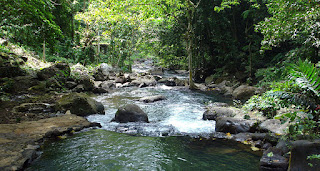where Does Water Come from ?
Soon after the enormous detonation, protons, neutrons and electrons swarmed in 10 billion degree heat [source: NASA]. Inside minutes, hydrogen and after that helium, known as the lighter components, had come to fruition from these nuclear structure hinders in a procedure called nucleosynthesis. (Lithium had an appearance also.) The heavier components didn't show until some other time, when the lighter components experienced combination within stars and during supernovas. After some time, stars sent wave after rush of these heavier components, including oxygen, out into space where they blended with the lighter components.
Obviously, the arrangement of hydrogen and oxygen particles and the resulting development of water are two distinct things. That is on the grounds that notwithstanding when hydrogen and oxygen particles blend, despite everything they need a sparkle of vitality to shape water. The procedure is a savage one, thus far no one has figured out how to securely make water on Earth.
So how did our planet come to be secured with seas, lakes and streams? The basic answer is regardless we don't have the foggiest idea, yet we have thoughts. One proposition expresses that, about 4 billion years prior, a huge number of space rocks and comets hammered into Earth's surface. A snappy look at the moon's cavity scarred surface gives us a thought of what conditions resembled. The proposition goes that these weren't typical shakes but instead what could be compared to enormous wipes, stacked with water that was discharged on effect.
Wirtanen has a place with a particular group of comets called "hyperactive comets" that vent more water vapor into space than others. The specialists concluded this by looking at the proportion of watched H2O and HDO. Earth's seas have a quite certain D/H proportion (deuterium/hydrogen proportion), and it gives the idea that Wirtanen shares that equivalent proportion. As watching infrared wavelengths starting from the earliest stage incomprehensible (Earth's environment obstructs these wavelengths), just space telescopes and SOFIA (which hovers above the vast majority of the climate) can mention solid objective facts of comets.
Another proposition expresses that a youthful Earth was besieged by oxygen and other overwhelming components delivered inside the sun. The oxygen joined with hydrogen and different gases discharged from Earth in a procedure known as degassing, shaping Earth's seas and environment en route.
A group of researchers from Japan's Tokyo Institute of Technology has concocted one more hypothesis, which expresses that a thick layer of hydrogen may have once secured Earth's surface, inevitably associating with oxides in the covering to frame our planet's seas.
At last, PC reproductions covered in 2017 have proposed a closer beginning for probably some water on our planet. The thought is that water could grow somewhere inside Earth's mantle and in the long run getaway by means of seismic tremors.
Thus, while we can't state with sureness how water came to Earth, we can say we're lucky it did.




Comments
Post a Comment